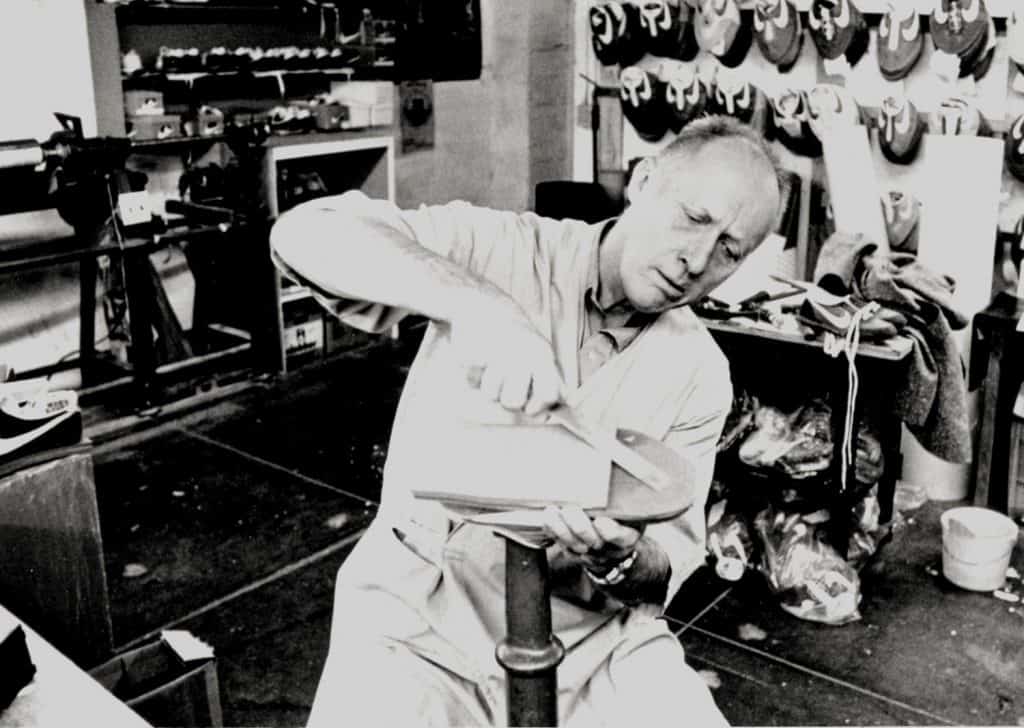Last update: 2022-04-12
Perhaps no one has affected the running world more than Bill Bowerman. From his 24-year coaching career at the University of Oregon to his continual quest for a better running shoe, Bowerman is synonymous with quality, success, and innovation.
Bowerman said, “If there are limits to what we can do, I don’t know what they are.” For decades, millions of people, from recreational joggers to Olympians, have reaped the benefits of his pioneering spirit.
The early years
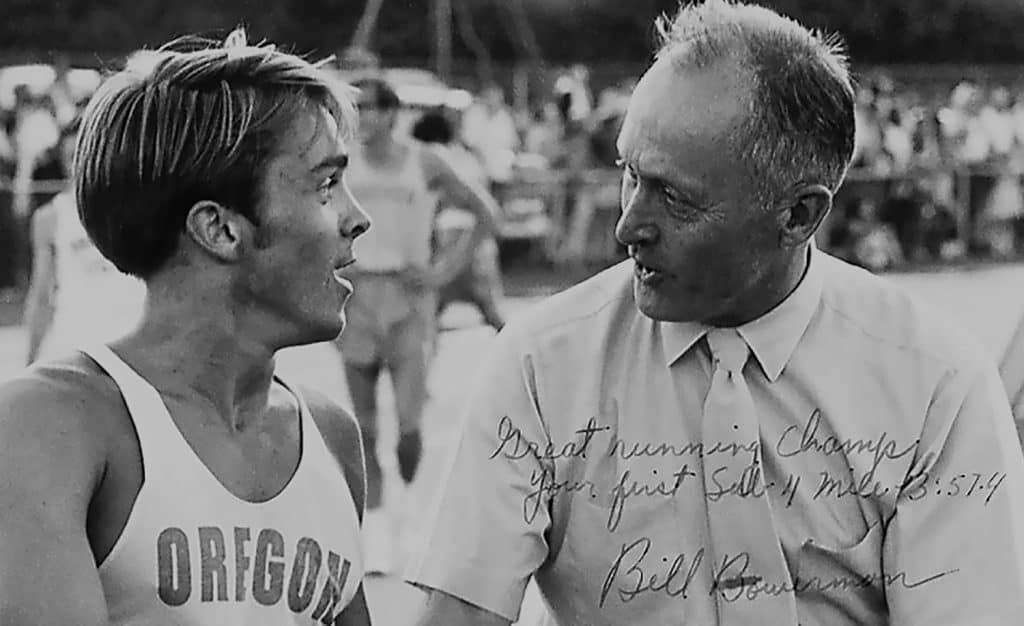
Born in Portland, Oregon, in February 1911, Bill Bowerman had a sister and two older brothers. His twin brother died in a tragic accident when he was two years old. Later, Bowerman attended Medford High School, playing football and being part of the high school band. He also met Barbara Young, his future wife, at Medford High.
After graduating in 1929, Bowerman continued his football career at the University of Oregon while studying journalism. He also took the suggestion of Oregon track and field coach Bill Hayward and joined the track team, sparking a lasting connection to running. Bowerman moved to Portland in 1934 to teach biology and coach football. When Japan attacked Pearl Harbor, Bowerman put his career on hold and joined the United States Army. At the end of World War II, Bowerman returned to Medford High School, where he again coached football. In July 1948, Bowerman returned to his alma mater, the University of Oregon, in Eugene. One year later, he accepted the position of head coach of the track team, the position formerly held by the retired Bill Hayward.
Track and field
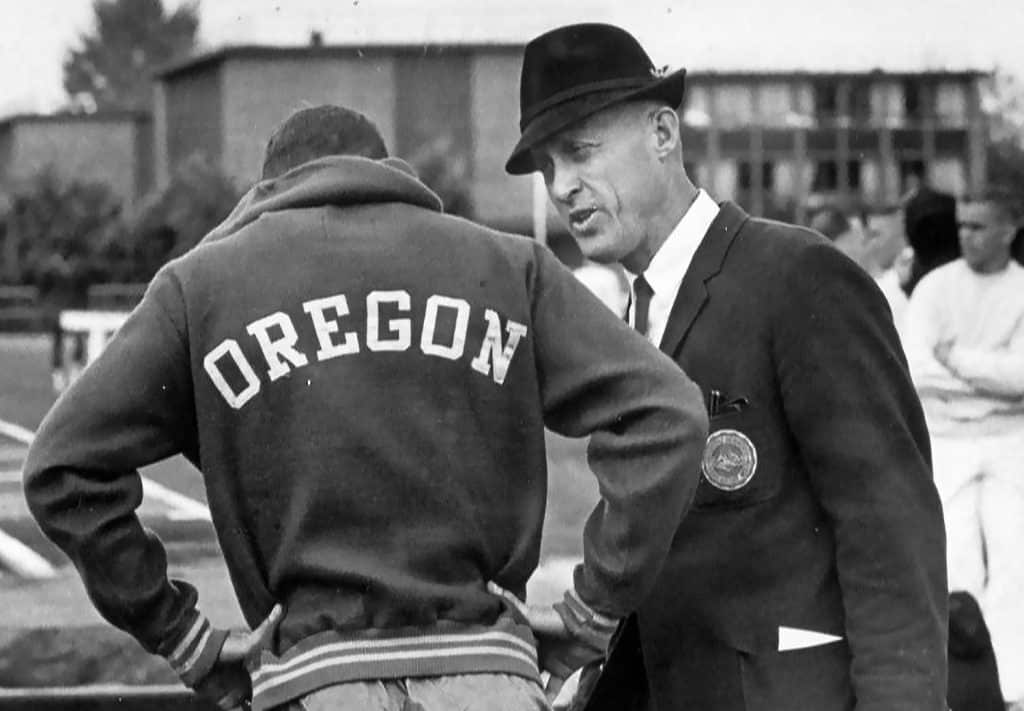
Bill Bowerman had stellar success as a head track coach at the University of Oregon. His Oregon runners took home four NCAA national titles, 24 individual titles, and 16 Top 10 NCAA finishes. In addition, his track and field teams included 64 All-Americans, 38 conference champions, and 33 Olympians.
Famous athletes
In addition to coaching hundreds of athletes, Bill Bowerman trained 31 Olympians, 51 All-Americans, and 12 American record-holders. Sixteen of his runners broke the four-minute-mile barrier. His athletes include long-distance runner Steve Prefontaine, two-time Olympic marathoner Kenny Moore, Australian Olympian Jim Bailey, seven-time world record holder Harry Jerome, and three-time Olympian and bronze medalist Bill Dellinger. Another Oregon runner, miler Phil Knight, was to play a significant part in Bowerman’s career as an entrepreneur.
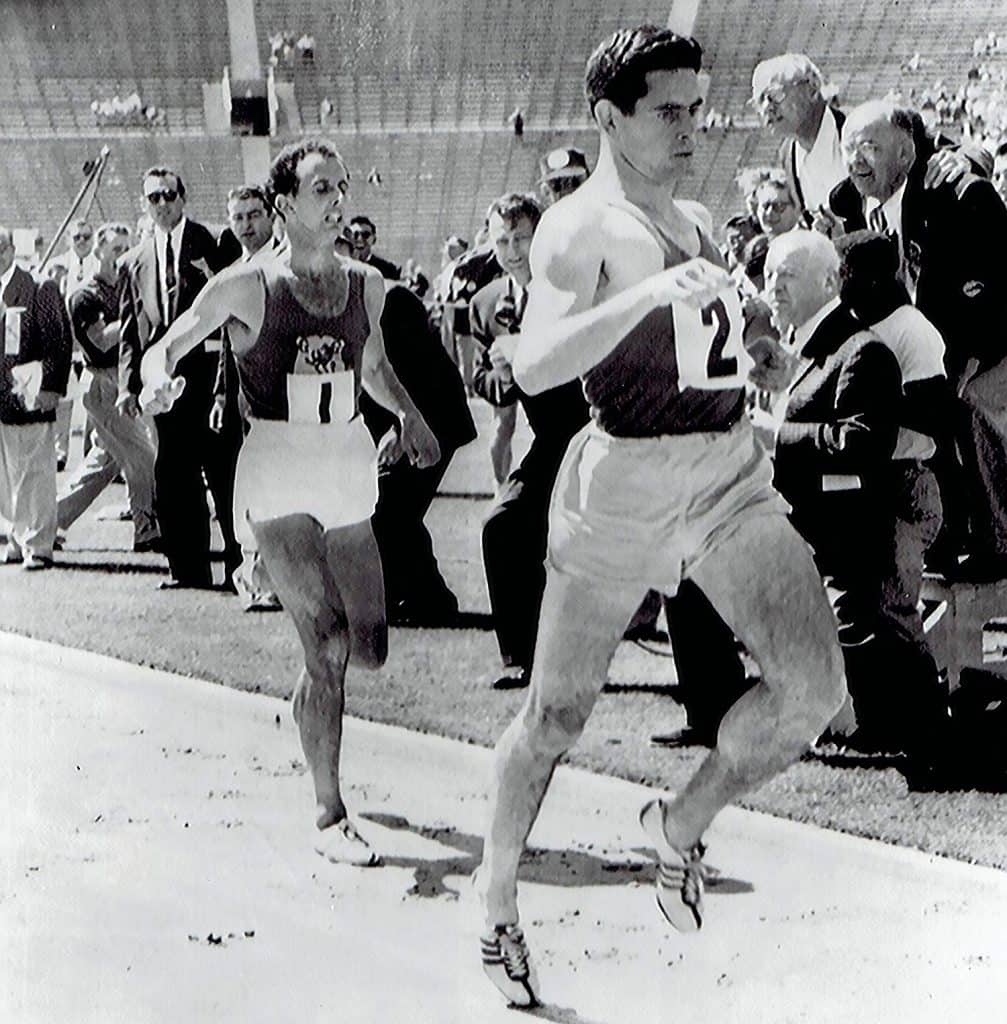
Commitment to the community
Bill Bowerman did as much for the Eugene community as he did for his track and field athletes. He launched community-wide track meets for all age levels and was instrumental in bringing the Pan Am Games and NCAA championships to Hayward Field. Bowerman played a leading role in bringing the Olympic track and field trials to Eugene in 1972, 1976, and 1980. The Olympic legacy continues, with Hayward Field hosting the trials in 2008, 2012, 2016, and 2021. He also coordinated fundraisers to support local athletes — including financial help getting to the Olympic Games — and renovate Hayward Field. It’s no wonder that Eugene is known as “Track Town USA.”
Early experimentation
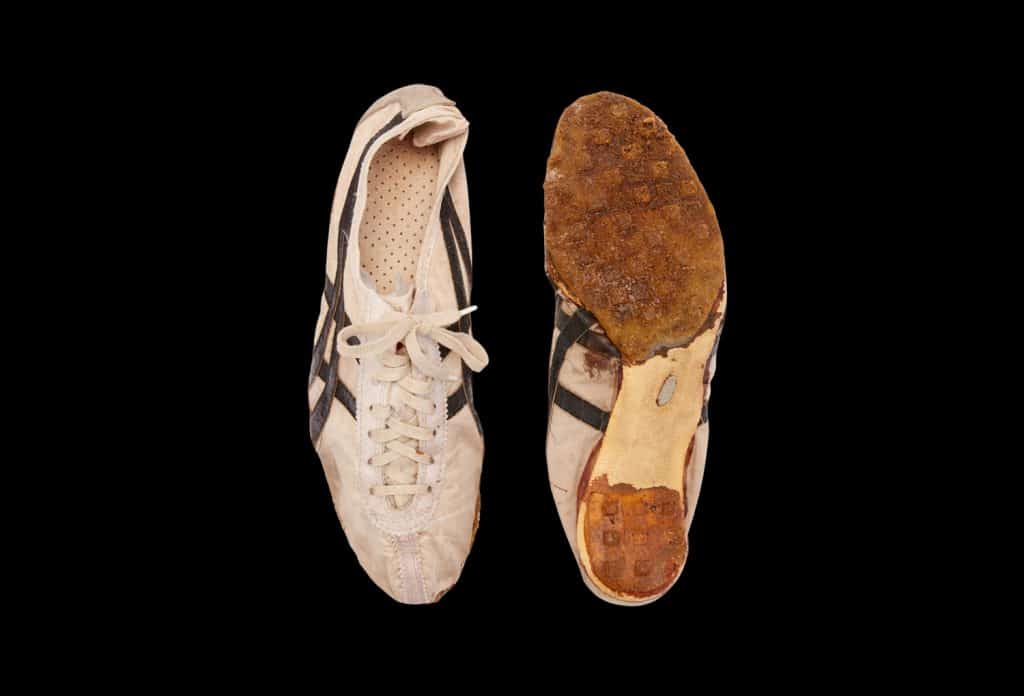
As a track and field coach, Bowerman knew firsthand the running shoes available to tracksters. Extremely dissatisfied with what footwear companies were offering, he wrote to several companies, offering suggestions on how to make them lighter and thus improve runners’ times.
Receiving no response, Bowerman set out to learn the shoe trade himself. He took running shoes apart to see how they were made. Next came experimenting with different materials for the upper — including deer hide, snakeskin, and kangaroo leather — and plastics and metals for the running spikes. Tailoring shoes to individual sizes and characteristics, Bowerman customized shoes for many track runners, including student-athlete Phil Knight, Olympic track star Otis Davis, and John Mays. As he experimented, he incorporated feedback from his runners, noting that “a teacher is never too smart to learn from his pupils.” Although American companies continued to reject his prototypes, Bowerman persisted. His breakthrough finally came through the Japanese footwear company Onitsuka Tiger.
The Nike Cortez
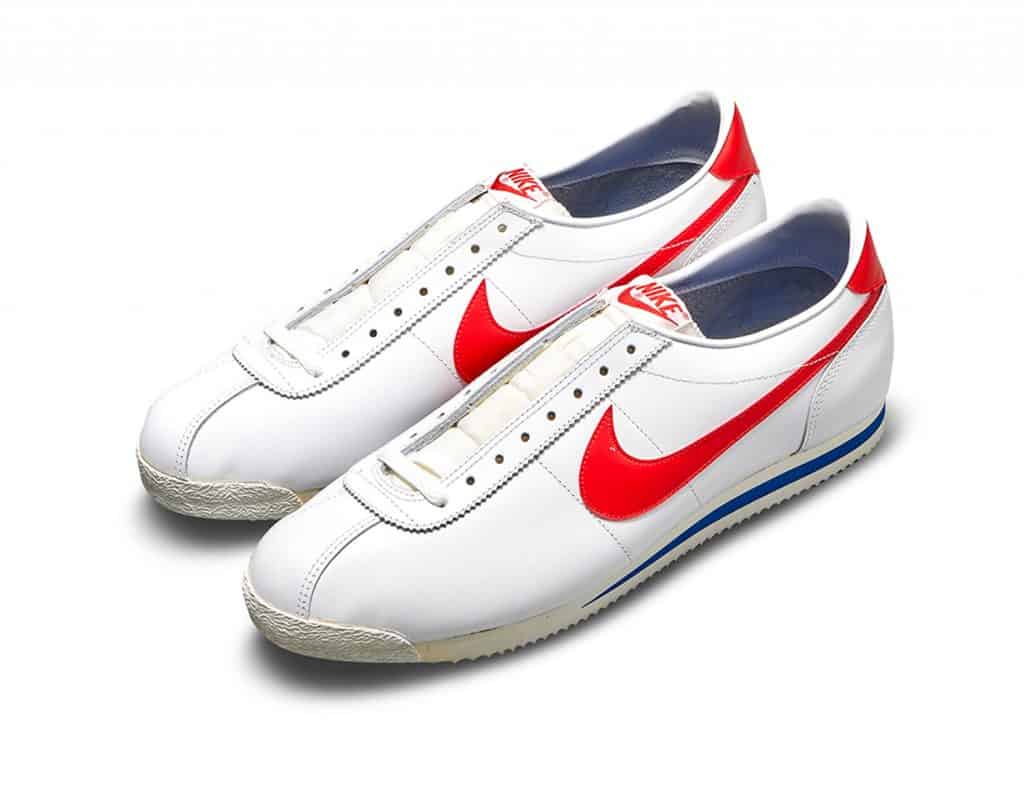
After graduating from the University of Oregon and getting his MBA from Stanford University, Phil Knight believed that Japanese companies were on the brink of breaking into the US market for running shoes. In 1964, Bowerman and Knight started Blue Ribbon Sports, a 50-50 partnership to import and sell Onitsuka Tiger shoes.
Injury and arch support
Knight handled the business end while Bowerman continued designing athletic shoes and coaching the Oregon track team. In 1965, another runner stepped on one of Bowerman’s athletes, future Olympian Kenny Moore, leaving a gash on Moore’s foot during a track meet. The injury led to discovering a mistake and, ultimately, to one of Bowerman’s most significant inventions.
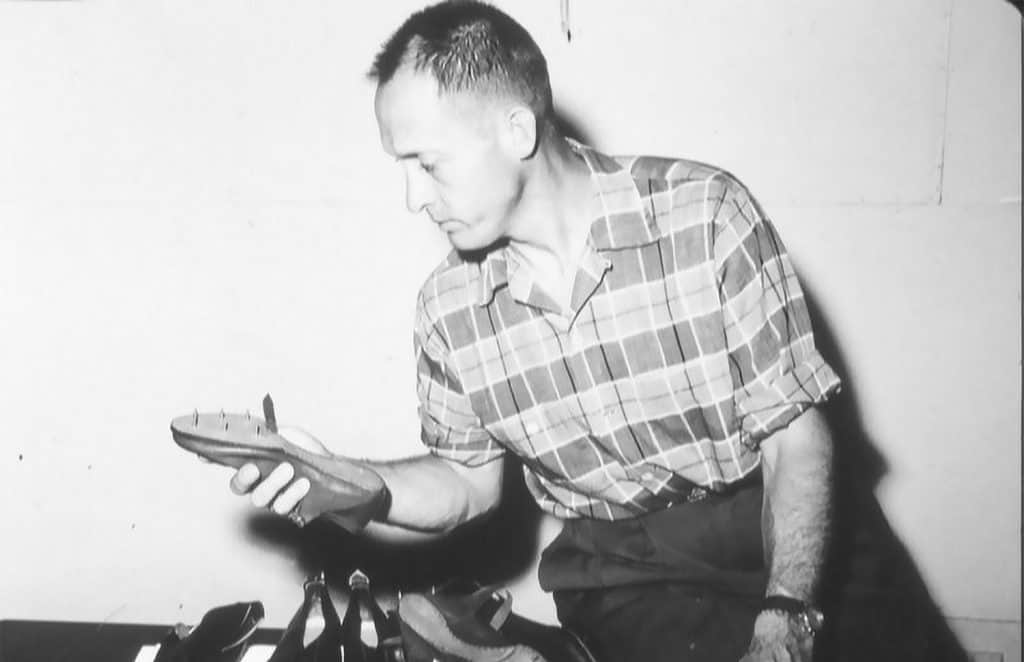
While recovering from the gash, Moore trained in Onitsuka’s Tiger TG-22. Blue Ribbon Sports sold it as a running shoe, but it was a high jump shoe. When Moore developed a stress fracture, Bowerman tore apart the shoe and discovered it had no arch support. Additionally, Bowerman reportedly said, “The outer sole rubber wears away like cornbread.”
The first Cortez
To correct the problems with the TG-22, Bowerman designed a shoe with soft sponge rubber in the heel and forefoot, a cushioned inner sole, and a firm rubber outsole. He sent it to Onitsuka for production, but Onitsuka changed the design on its early models. Meanwhile, Moore recovered from his stress fracture and logged more than 1,000 miles in Bowerman’s creation. Onitsuka eventually released the Tiger Cortez, a shoe that included Bowerman’s original conception of a full-length midsole.
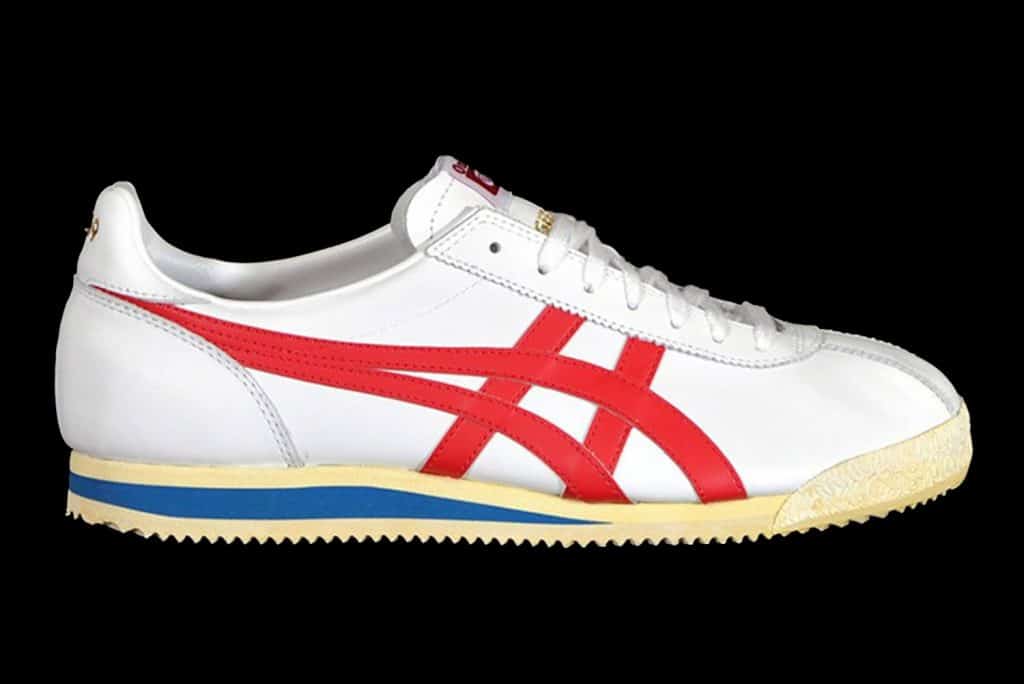
The release of the Cortez in 1967 coincided with Bowerman’s book “Jogging,” which helped inspire the concept that running wasn’t solely for student-athletes. (As Bowerman said, “If you have a body, you are an athlete.) As Blue Ribbon Sports transitioned into the shoe company now known as Nike, the Cortez transitioned into the Nike Cortez. The shoe that was the Kenny Moore prototype eventually earned Bowerman a patent for its revolutionizing continuously cushioned midsole, an innovation that reduced leg fatigue, absorbed road shock, and decreased the strain on the Achilles tendon.
Waffle soles
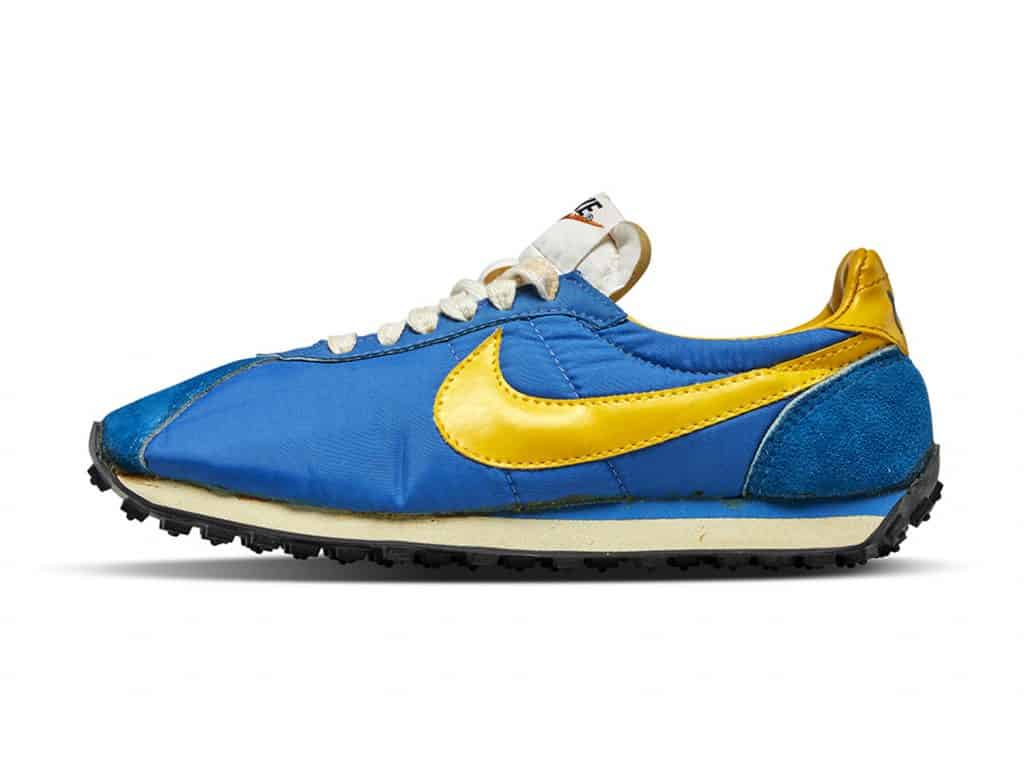
Bowerman continued to tinker with shoe designs. His consistent goal was to make shoes lighter. After the Cortez, he turned his attention to designing a spike-less shoe that delivered outstanding traction on different surfaces. While eating waffles for breakfast one day in 1970, he wondered what would happen if the nubs on the waffle were inverted. Pouring rubber into a waffle iron — and ruining his wife’s waffle iron — Bowerman created a sole with a raised grid pattern. The sole was lightweight, springy, and had a good grip.
The shoes left a distinct imprint on the ground, much like the footprints left by Apollo astronauts on the moon, leading to the name “Moon Shoe.” Bowerman paired the waffle sole with nylon uppers he flew in from Japan and debuted the Moon Shoe at the 1972 Olympic Trials held in Eugene. Competitors liked the traction and feel of the shoe, and after further refinement, the design paved the way for introducing the “Waffle Trainer” in 1974.
The birth of a dynasty
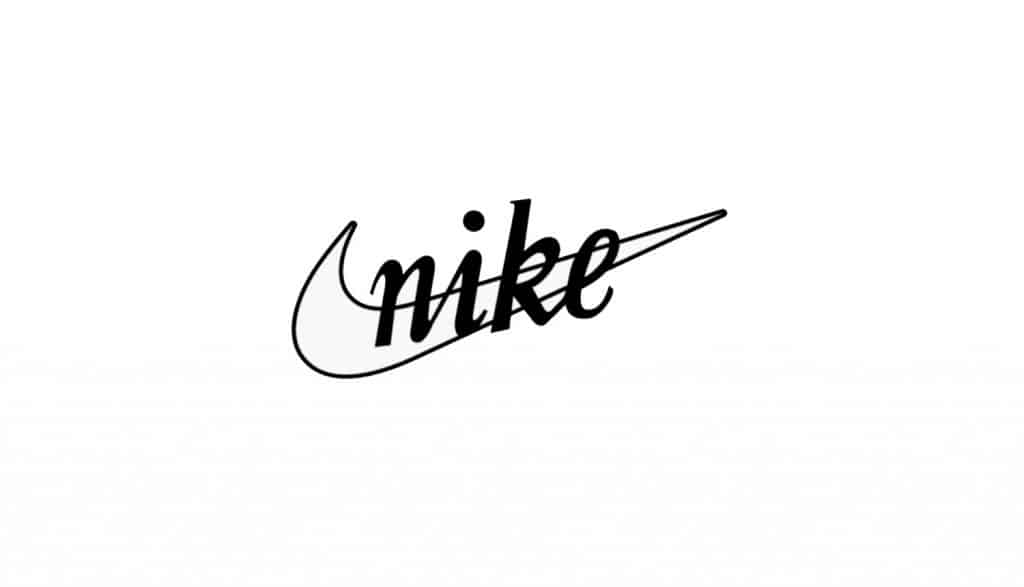
In 1971, Blue Ribbon Sports split from Onitsuka Tiger. Knight and Bowerman formed Nike, named after the Greek goddess of victory. The company has arguably become the best-known sports company around the world. The story is that Knight wanted to call the company “Dimension 6.” He agreed to Nike at the suggestion of Jeff Johnson, Blue Ribbon Sports’ first full-time employee, after Johnson dreamed about the Greek goddess. Carolyn Davis, a design student at Portland State University, designed the Swoosh logo for $35. In 1983, Phil Knight awarded Davis 500 shares of Nike stock to recognize her contribution to the fledgling company.
The release of the waffle racer in 1974 was the first major success for Nike and helped establish the company as a major player in the athletic footwear arena. Bowerman, who stepped away from coaching in 1972, registered eight patents in shoe design, including for a cushioned spike plate, external heel counter, a straight last, and cleated shoes for artificial turf.
The Nike tradition
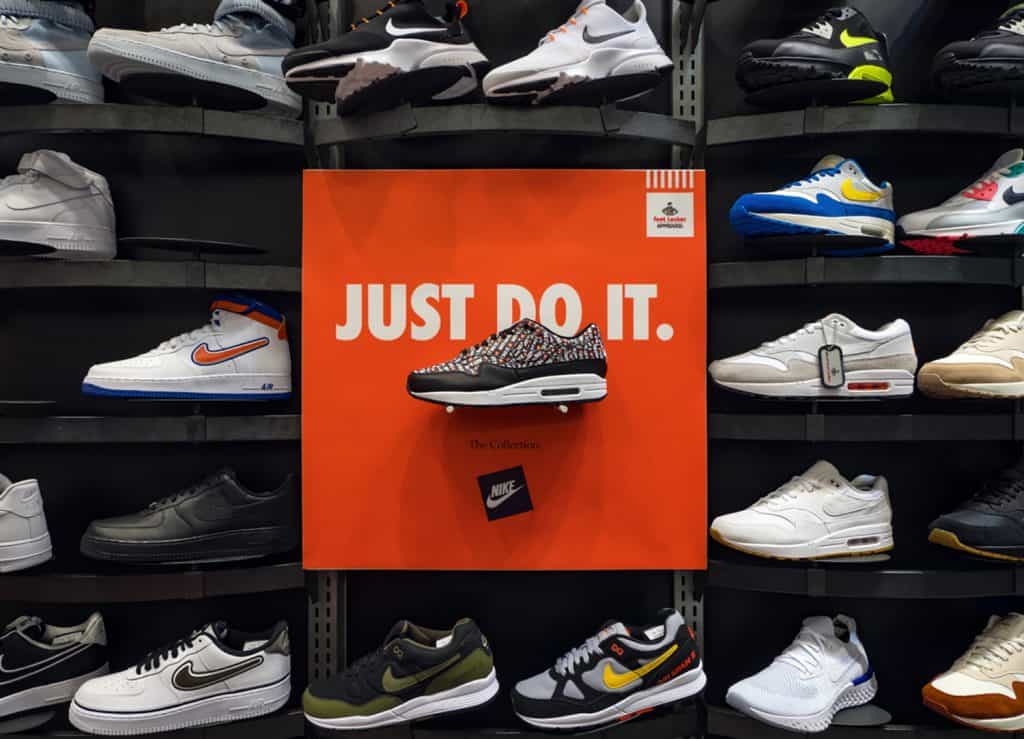
The Nike Swoosh is one of the most recognizable logos worldwide, partly because the company has remained a powerhouse of innovation. Nike expanded its running base to include shoes for cheerleading, skateboarding, baseball, and other leisure activities. Tennis icon Jimmy Connors won his first Wimbledon wearing Nike shoes. The company’s apparel line includes shorts, caps, gloves, jerseys, and clothing for virtually every sport. Celebrities that endorse Nike athletic shoes include Michael Jordan, who almost didn’t sign, Tiger Woods, and tennis star Ilie Nastase.
Today, Nike continues the tradition of its co-founders, Bill Bowerman and Phil Knight. While Bowerman sold most of his Nike shares in the 1980s, the company carried on his desire to design running shoes that improve performance and comfort for runners at all levels. As a result, innovations such as ZoomX foam have catapulted the Nike ZoomX Dragonfly and other Nike products to the top in terms of popularity and satisfaction.
Bill Bowerman fun facts
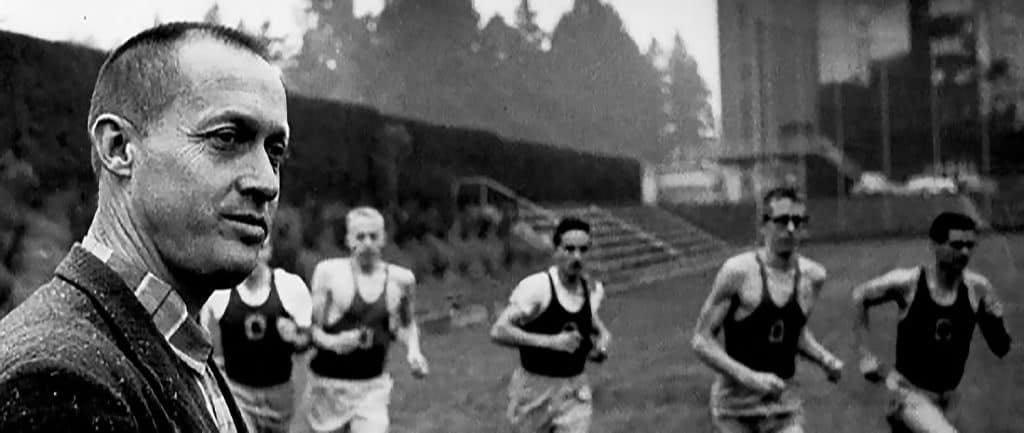
Bowerman is best known for his success as an American track coach, his iconic footwear designs, and a founder of Nike, but he made other contributions as well:
- Awarded the Bronze Star in 1945 for combat as part of the 10th Mountain Division in Italy
- Assistant coach for the 1968 Olympics and head coach for the 1972 Games
- Created a high-altitude training program for 1968 US Olympic athletes competing in Mexico
- He was an outstanding football player during his junior and senior years in high school
- Ignited a nationwide jogging boom in 1950 as co-author of the pamphlet “Jogging.”
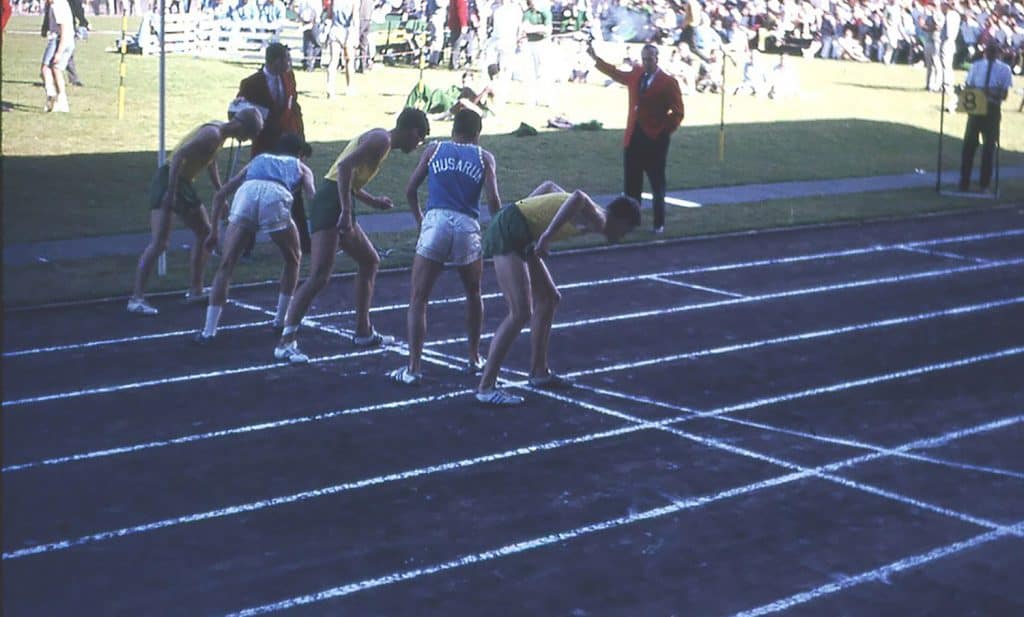
- Petitioned the Amateur Athletic Union on behalf of athletes’ rights
- Created a running program that became the national model for fitness programs
- Wanted to go to medical school but concluded he was better suited to teaching
- Led Medford High School to several state titles as head football coach
- Remained active with the University of Oregon and Nike into the 1990s
The Bill Bowerman legacy
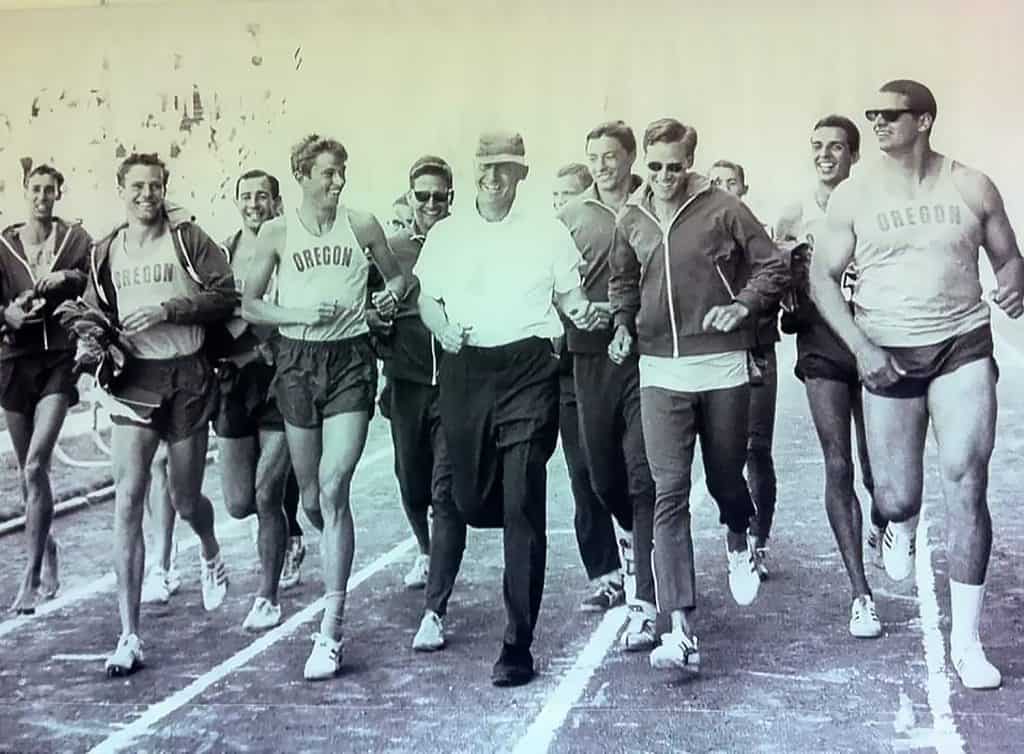
Coach Bill Bowerman passed away on Dec. 24, 1999, at the age of 88. His lifelong relationship with the sport of running left an indelible mark. As a member of the USA National Track and Field Hall of Fame, National Distance Running Hall of Fame, and the Oregon Sports Hall of Fame, he will forever be remembered as a pillar of support and harbinger of change in the running community. As co-founder of Nike, his name is a synonym for curiosity and innovation.
The US Track & Field and Cross Country Coaches Association awards “The Bowerman” to the most outstanding collegiate male and female track and field athlete each year. Winners include Galen Rupp and Jenny Barringer. As each generation of young runners learns about his innovation, successful training methods, and impact on the athletic world, the legacy Bowerman leaves behind lives on.


